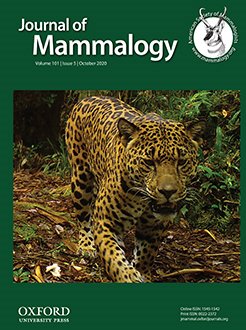Carbon and nitrogen stable isotope ratios are used widely to describe wildlife animal diet composition and trophic interactions. To reconstruct consumer diet, the isotopic differences between consumers and their diet items—called the trophic discrimination factor (TDF)—must be known. Proxies of diet composition are sensitive to the accuracy of TDFs. However, specific TDFs are still missing for many species and tissues because only a few controlled studies have been carried out on captive animals. The aim of this study was to estimate TDFs for hair and blood for carbon and nitrogen stable isotopes for caribou, moose, white-tailed deer, eastern coyote, and black bear. We obtained stable isotope ratios for diet items, hair, and blood samples, of 21 captive adult mammals. Diet–tissue discrimination factors for carbon in hair (Δ13CLE) ranged from 0.96‰ to 3.72‰ for cervids, 3.01‰ to 3.76‰ for coyote, and 5.15‰ to 6.35‰ for black bear, while nitrogen discrimination factors (Δ15N) ranged from 2.58‰ to 5.95‰ for cervids, 2.90‰ to 3.13‰ for coyote, and 4.48‰ to 5.44‰ for black bear. The Δ13CLE values in coyote blood components ranged from 2.20‰ to 2.69‰ while Δ15N ranged from 3.30‰ to 4.41‰. In caribou serum, Δ13CLE reached 3.34 ± 1.28‰ while Δ15N reached 5.02 ± 0.07‰. The TDFs calculated in this study will allow the evaluation of diet composition and trophic relationships between these five mammal species and will have important implications for the study of endangered caribou populations for which the use of noninvasive tissue sampling is highly relevant.
How to translate text using browser tools
3 October 2020
From diet to hair and blood: empirical estimation of discrimination factors for C and N stable isotopes in five terrestrial mammals
Ève Rioux,
Fanie Pelletier,
Martin-Hugues St-Laurent
ACCESS THE FULL ARTICLE

Journal of Mammalogy
Vol. 101 • No. 5
October 2020
Vol. 101 • No. 5
October 2020




